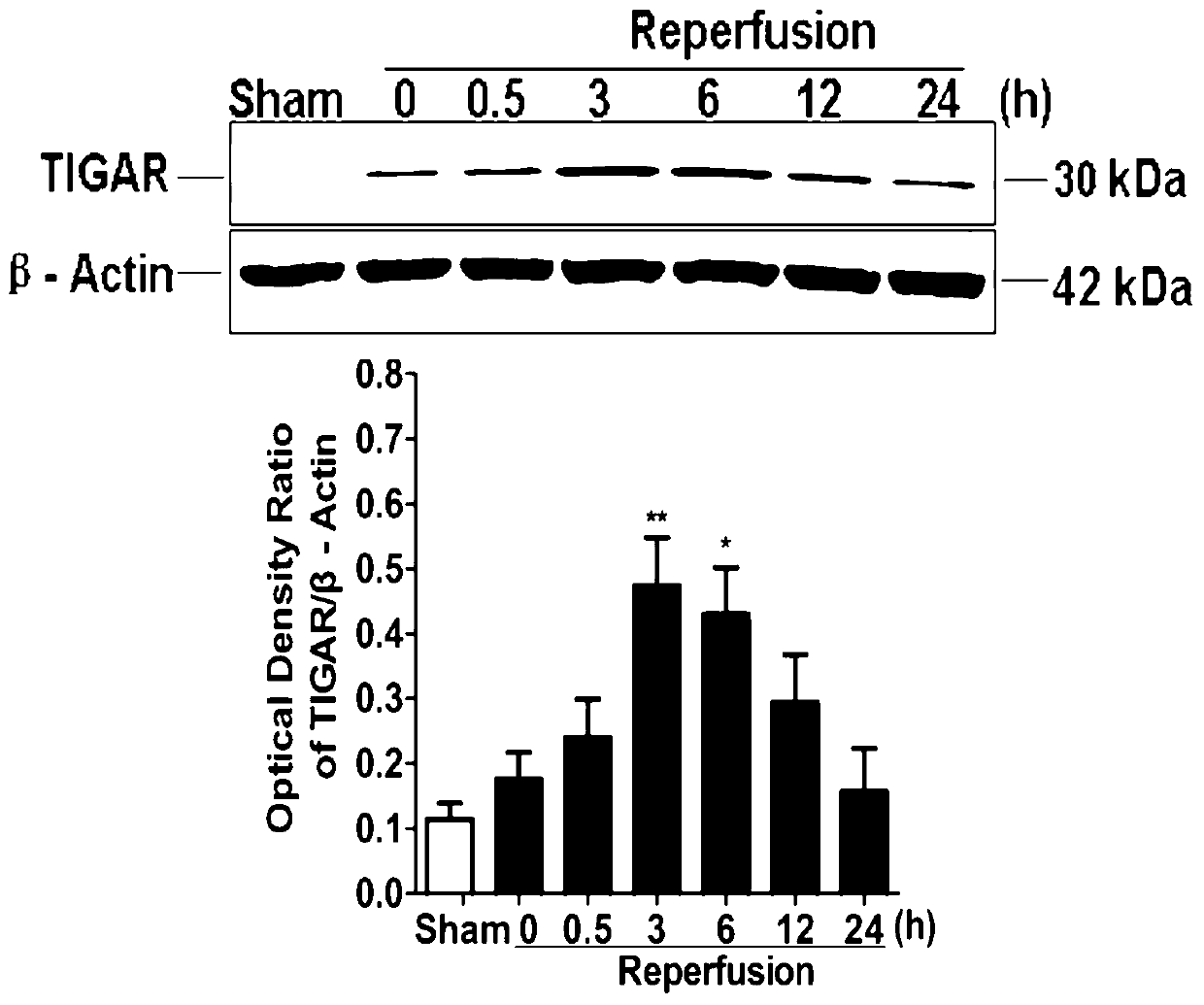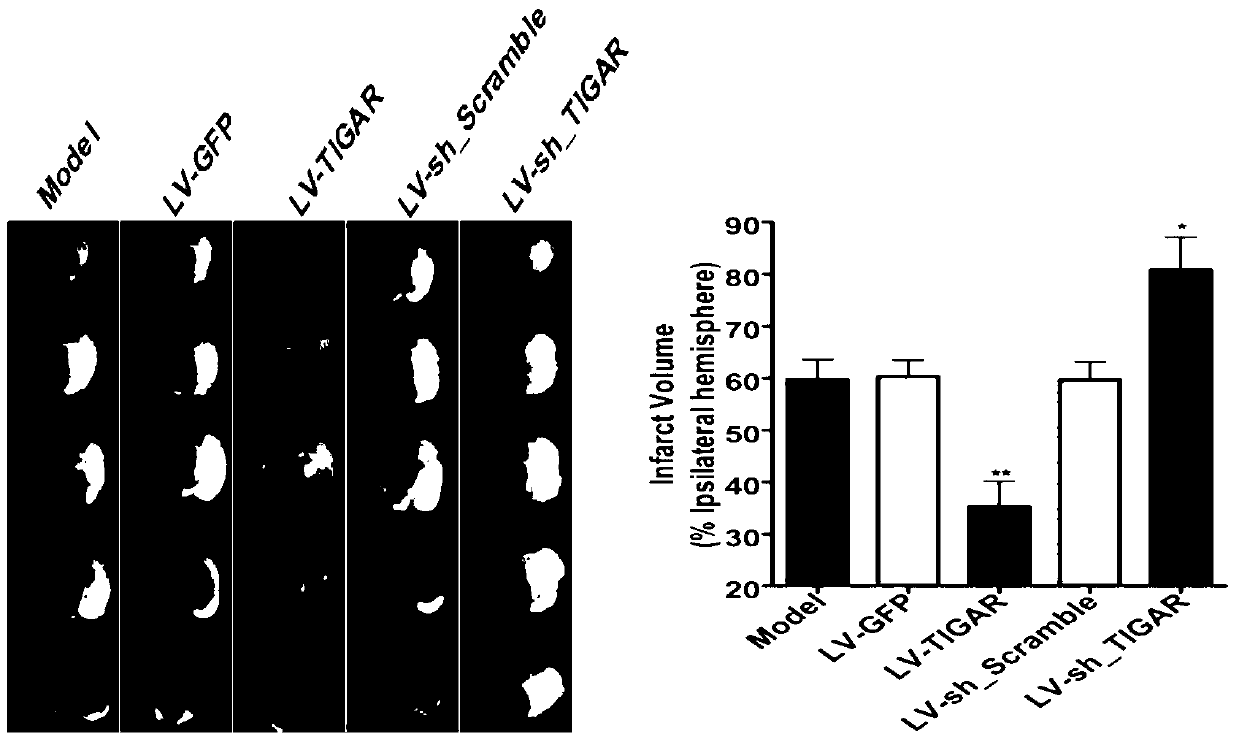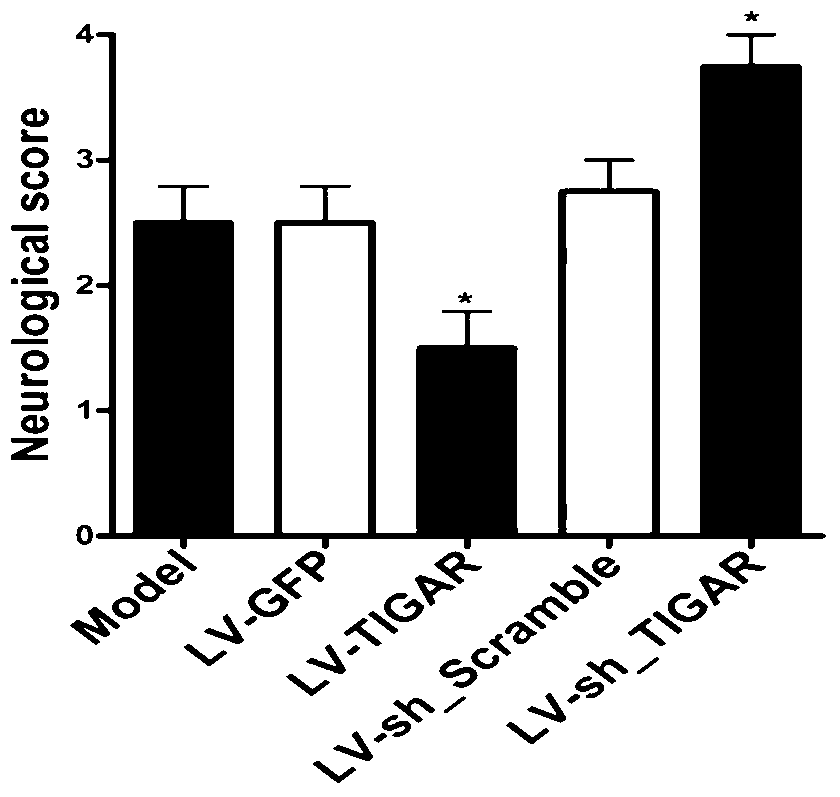Application of NADPH in preparing medicaments for preventing and treating ischemic cerebral stroke
A drug and aspect technology, applied in the field of new drug use, to achieve the effect of small dosage and wide use
- Summary
- Abstract
- Description
- Claims
- Application Information
AI Technical Summary
Problems solved by technology
Method used
Image
Examples
Embodiment
[0047] Example TIGAR reduces cerebral ischemia-reperfusion injury by increasing the production of NADPH
[0048] (1) Experimental materials
[0049] Clean-grade male ICR mice, weighing 23-28 g, were provided by the Experimental Animal Center of Soochow University, experimental animal production license number: XCYK (Su) 2002-2008, experimental animal use license number: SYXK (Su) 2002-0037. Room temperature 22°C, humidity 50-60%, well ventilated, artificial day and night (12h / 12h), free to eat and drink. Before the experiment, the male mice were acclimatized in the breeding environment for 2 days. Divided into 5 groups: overexpression TIGAR mice group (LV-TIGAR mice), silent TIGAR mice group (LV-sh_TIGAR or knockdown mice), LV-GFP group was the negative control group of overexpression TIGAR mice, LV-sh_TIGAR group was Negative control group of silenced TIGAR mice. NADPH reagent was purchased from Jiangsu Biyuntian Biological Reagent Company; the source of exogenous NADPH dr...
Embodiment 2
[0089] Example 2 The protective effect of exogenous NADPH on primary cortical neuron injury in mice lacking glucose and hypoxia
[0090] (1) Experimental materials and grouping are the same as in Example 1. Refer also to Example 1 for the relevant experimental conditions.
[0091] (2) Experimental plan:
[0092] Culture of primary cortical neurons: Take 17-day-pregnant ICR mouse fetuses under sterile conditions, peel off the cerebral hemispheres, peel off the pia mater and blood vessels under a dissecting microscope, separate the cerebral cortex tissue, and rinse with pre-cooled PBS for 2- 3 times, then digested with 1.25% trypsin at 37°C for 15-30min, stopped the trypsin with DMEM / F12 culture medium containing 10% serum, then treated the cells with DNase I for 3min, and finally separated the tissue into a single cell suspension by blowing with a pipette Cells were counted with a counting plate in Neurobasal Medium containing 10% B27, 5% Pen / Strep, and 25 μM Glutamate, and s...
Embodiment 3
[0103] Example 3 Therapeutic Administration of NADPH to Reduce Cerebral Ischemia Damage
[0104] Experimental material, grouping are with embodiment 1. Refer also to Example 1 for the relevant experimental conditions.
[0105] Experimental program:
[0106] ICR mice, weighing 23-28 g, were randomly divided into 6 groups, 20 in each group, respectively saline (vehicle) group, 0h group, 2h group, 4h group, 6h group, and 8h group. NADPH (2.5mg / kg) was injected into the body through the tail vein at 0h, 2h, 4h, 6h, and 8h after reperfusion.
[0107] The experimental results are as follows:
[0108] Figure 21 The effect of NADPH given therapeutically on cerebral infarct volume in mice with cerebral ischemic stroke. The results of TTC staining showed that compared with the vehicle group, after reperfusion 0h, 2h, 4h tail vein administration of NADPH significantly reduced the volume of cerebral infarction in mice (p<0.05, p<0.01). There was no significant difference between 6h...
PUM
 Login to View More
Login to View More Abstract
Description
Claims
Application Information
 Login to View More
Login to View More - R&D
- Intellectual Property
- Life Sciences
- Materials
- Tech Scout
- Unparalleled Data Quality
- Higher Quality Content
- 60% Fewer Hallucinations
Browse by: Latest US Patents, China's latest patents, Technical Efficacy Thesaurus, Application Domain, Technology Topic, Popular Technical Reports.
© 2025 PatSnap. All rights reserved.Legal|Privacy policy|Modern Slavery Act Transparency Statement|Sitemap|About US| Contact US: help@patsnap.com



